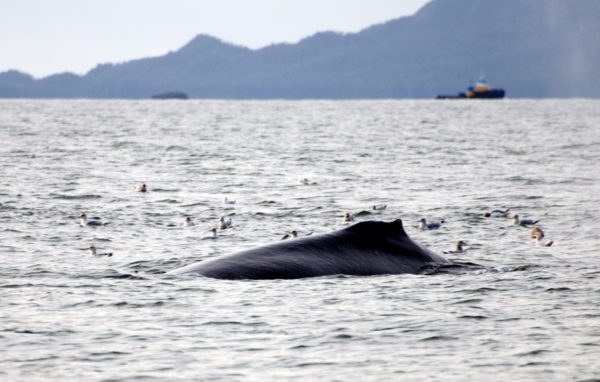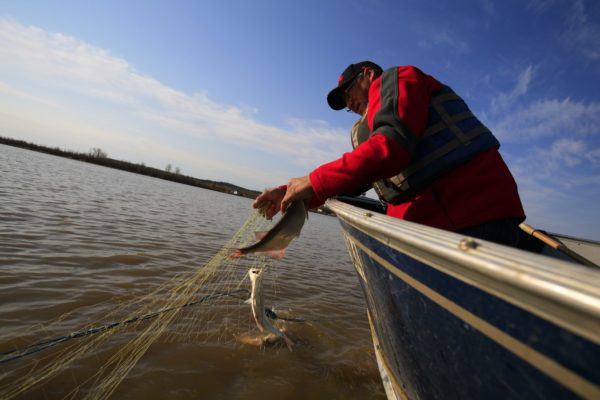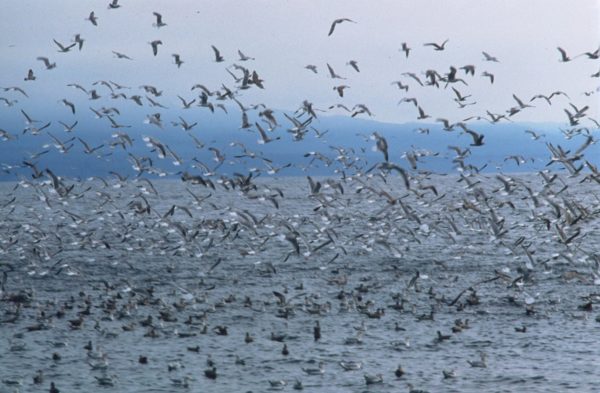I got 99 problems and dumping is one
Canada has new standards for marine protected areas, but are they good enough?
WWF-Canada celebrated earlier this year when the federal government announced a ban on oil and gas exploration, mining, dumping, and bottom trawling in all federal marine protected areas. While this is a positive step towards creating minimum standards for protected areas, the practice of dumping — a notable consequence of shipping — isn’t comprehensively defined. Without a definition, how can we expect to stop dumping from wreaking environmental havoc?

The new standards are an opportunity to clearly define dumping
When interpreting legislation, lawyers and courts generally look to the common interpretation of a term and its usage within an industry or profession. So, let’s talk about what dumping should be in the context of marine protected areas in Canada.
WWF-Canada supports a comprehensive definition of dumping within marine protected areas, which would include strict zero discharges of:
- Sewage (also known as blackwater): The general term for water from toilets, medical facilities, and sites for live animals. Sewage poses risks to human health when we consume fish and bivalve shellfish (oysters, clams and mussels) as they can come from fecal-contaminated waters. Invasive species can also be introduced via sewage. Under low light and temperature conditions, like in the Arctic, the environmental impacts of sewage can be amplified because decomposition happens more slowly.
- Grey water: the discharge from sinks, showers and galleys. Grey water can contain a wide variety of pollutants including nutrients, oil and grease, detergent and soap residue, metals (e.g., copper, lead, mercury), bacteria and pathogens. Grey water can generate dead zones, where excessive algal growth limits other organisms from thriving.
- Ballast water and sediments: Ballast water, which is picked up by ships to maintain stability over long distances, can contain thousands of organisms (algae, bacteria, larvae) which are then released as alien species into ecosystems where they are not normally found. Invasive species threaten native species and ecosystems, which can have also cultural impacts if the native species are important for community subsistence harvesting.

- Effluent from Exhaust Gas Cleaning Systems (a.k.a. scrubbers): Designed to remove sulphur oxides from exhaust gases that are created as fuel is burnt in marine engines, scrubber effluent contains heavy metals and polycyclic aromatic hydrocarbons which have cancer-causing effects and can impact marine life and coastal communities that rely on fish as part of their diet.
- Solid waste: food, domestic, operational or hazardous waste generated during the normal operation of the ship. Dumping of garbage and solid wastes may occur from ships with limited waste storage capacity and in areas where regulations are hard to police. Solid waste such as plastics pose a significant threat to marine life and can remain in the environment for decades. Marine species may mistake submerged plastic for food while feeding, which can often be lethal.
- Oil: discharged from routine operations, bilge water, illegal cleaning of tanks, and propeller shaft bearings. In total, about 200,000 tonnes of operational oil are estimated to be discharged annually. Oil discharges can be toxic to marine life, are very difficult to clean up and can persist for years in the marine environment

Healthy oceans depend on marine protected areas: Marine protected areas provide an opportunity for marine wildlife populations to recover from the consequences of human activities, such as pollution and overfishing. The dumping of sewage, grey water, solid waste, scrubber effluent, ballast water and oil threaten marine habitats and ecosystems, as well as coastal communities. The discharge of such pollutants, in any quantity, in or near a marine protected area stands in direct conflict with meeting conservation goals.
Why zero discharge?
The effectiveness of international and national regulations for the discharges listed above are questionable. While the disposal of garbage such as plastic is banned at sea under MARPOL Annex V, a recent study showed that most plastic waste in the South Atlantic probably comes from ships. In Canada, to comply with Sewage Discharge Regulations, a vessel can discharge sewage within three nautical miles if using a marine sanitation device. Yet, a sewage treatment analysis based on tests on effluent of sewage treatment plants submitted to the IMO by the Netherlands showed that 97 per cent of the treatment plants did not meet all of the discharge standards.
Zero discharge is possible: Turkish and Californian ports prohibit the discharge of sewage, grey water, ballast water, scrubber washwater, solid waste and oil from large vessels. A ban on dumping in marine protected areas, which includes all the various pollution streams from a ship, should be part of the Canadian commitment for healthy marine wildlife and ecosystems, and the resilience of the communities that co-exist with them.

